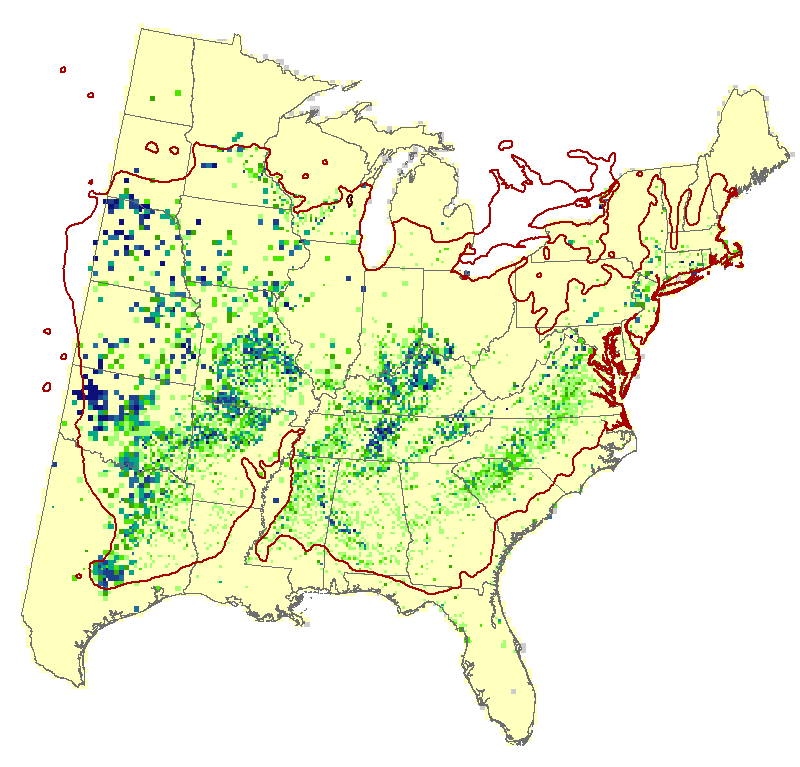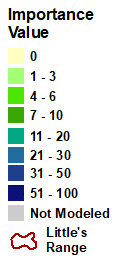eastern redcedar (Juniperus virginiana)
Model Reliability: Medium
| GCM SCENARIO | % Area Occ | Ave IV | Sum IV | Future/Current IV |
|---|---|---|---|---|
| Actual | 18.8 | 9.1 | 50249 | N/A |
| RFimp | 23.2 | 5.9 | 40572 | 0.81 |
| CCSM45 | 47.6 | 5.3 | 73448 | 1.81 |
| CCSM85 | 71.8 | 5.8 | 122155 | 3.01 |
| GFDL45 | 70.5 | 5.7 | 117299 | 2.89 |
| GFDL85 | 78.6 | 6.7 | 154246 | 3.8 |
| HAD45 | 71.3 | 5.8 | 121956 | 3.01 |
| HAD85 | 80.4 | 6.8 | 159857 | 3.94 |
| GCM45 | 74.7 | 4.8 | 104270 | 2.57 |
| GCM85 | 81.1 | 6.1 | 145472 | 3.59 |
Regional Summary Tree Tables
Summaries for tree species are available for a variety of geographies, in both PDF and Excel format. These summaries are based on Version 4 of the Climate Change Tree Atlas
Interpretation Guide
Eastern red cedar is widely distributed (19% of eastern US), densely occurring, and of high importance now and is presented to expand habitat substantially (large increase under both 4.5 and 8.5); because of its capacity to withstand drought and high temperatures, it should fare well even under RCP 8.5, and has a very good capability to cope. Because of its wide distribution currently, SHIFT shows abundant infilling and expansion as well within 100 years, though much of the new habitat in the north would not be colonized naturally within 100 years.
Family: Cupressaceae
Guild: pioneer, dry-site intolerant
Functional Lifeform: small to medium-size evergreenconifer
| 3.9 | 0.56 |
| -1.48 |  |
MODFACs
What traits will impact eastern redcedar's ability to adapt to climate change, and in what way?:
Primary Positive Traits
Drought
Primary Negative Traits
Fire topkill Shade tolerance Insect pests



